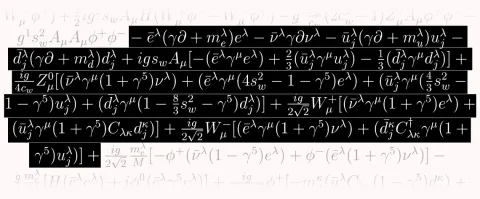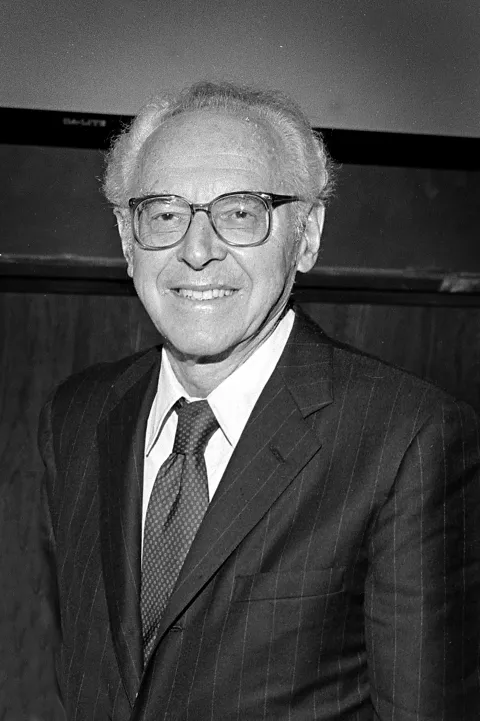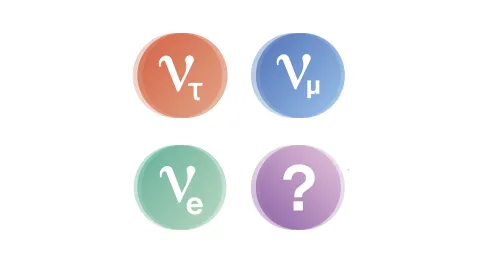Why DUNE? Shedding light on the unification of nature’s forces
Part III in our series exploring the science goals of the international Deep Underground Neutrino Experiment
Master theoretical physicists laid the foundations of the Standard Model throughout the second half of the twentieth century. With outstanding success, it explained how particles like protons, neutrons and electrons interact on a subatomic level. It also made Nobel Prize-winning predictions about new particles, such as the Higgs Boson, that were later observed in experiments. For decades, the Standard Model has been the scaffolding on which physicists drape quantum concepts from magnetism to nuclear fusion.
Despite its remarkable dexterity and longevity, however, some physicists have described the Standard Model as “incomplete,” “ugly” and, in some instances, even “grotesque.”
“The Standard Model is an effective theory, but we are not satisfied,” said Chang Kee Jung, a professor of physics at Stony Brook University. “Physicists, in some sense, are perfectionists. We always want to know exactly why things work a certain way.” While the Standard Model is incredibly useful, it is far from perfect.

In a bewildering example, the Standard Model predicted that neutrinos, the universe’s most abundant particle, would be massless. In 1998, the Super-Kamiokande experiment in Japan caught the Standard Model in a lie. Neutrinos do indeed have mass, albeit very little. Further complicating matters, the Standard Model doesn’t explain dark matter or dark energy; combined, these account for 95 percent of the universe. In other cases, the Standard Model requires physicists to begrudgingly plug in arbitrary parameters to reflect experimental data.
Unwilling to ignore these flaws, physicists are looking for a new, more perfect model of the subatomic universe. And many are hoping that the Deep Underground Neutrino Experiment, hosted by the Department of Energy’s Fermi National Accelerator Laboratory, can put their theories to the test.
Grander theories of the quantum world
Leading alternatives to the Standard Model attempt to unify the three quantum forces: strong, weak and electromagnetic. Physicists have demonstrated that, at extremely high energies, the weak and electromagnetic force become indistinguishable. Many believe that the strong force can be unified in the same way.
“Grand unification is the beautiful idea that there was a single force at the beginning of the universe, and what we see now is three manifestations of that original force,” said Jonathan Lee Feng, particle and cosmology theorist at the University of California, Irvine. This class of “Grand Unified Theories” is charmingly abbreviated as “GUTs.”
In their search for a GUT, theorists have been a bit too successful. They haven’t created just one alternative to the Standard Model—they’ve created hundreds. These models unify quantum forces, explain the mass of a neutrino and eliminate many arbitrary parameters. Some are practical and bare-boned, others far-fetched and elaborate, but nearly all are mathematically solid.
Even so, they can’t all be “right.”
“You can write a logically and mathematically consistent theory, but that doesn’t mean it matches the real mechanisms of the universe,” Jung said. “Nature chooses its own way.”
Testing physics beyond the Standard Model
GUTs are a major branch of theory. But others also attempt to reshape our understanding of the universe. Surrounded by more models than could possibly be correct, theorists around the world are asking the universe for a nudge in the right direction.
Just as the Standard Model predicted novel particles in the twentieth century that were later discovered through experimentation, new theories also predict never-before-seen phenomena. Some models predict the decay of a particle once thought immortal. Others hint at a fourth generation of neutrino. Still others foretell of particles that communicate between our realm and the realm of dark matter.
“We can continue to speculate and refine these models, but if we actually witnessed one of these predictions, we’d have much more precise hints about where to go,” Feng said.
Enter DUNE. The main goal of the international Deep Underground Neutrino Experiment is to keep a watchful eye on a beam of neutrinos traveling from Fermilab to detectors deep under the earth at Sanford Underground Research Facility. However, the experiment is also designed to be sensitive to a slew of interactions predicted by avant-garde theories. The observation of even one of these predictions would rule out dozens of theories and guide the next generation of quantum theory.
Tuned to witness quantum strangeness
Proton decay
The Standard Model dictates that protons—basic building blocks of matter best known for how they clump with neutrons in the center of an atom—are stable particles, destined to live forever.
However, many Grand Unified Theories have predicted that, eventually, protons will decay. While different models disagree on the specific mechanisms that cause this decay, the general consensus is that proton decay is a good place to start investigating physics beyond the Standard Model.
To validate these theories, physicists just have to glimpse the death of a proton.
In the early 1950s, Maurice Goldhaber, an esteemed physicist who later directed Brookhaven National Laboratory, postulated that protons live at least 1016 years. If their lifespan were any shorter, the radiation from frequent decays would destroy the human body. Thus, Goldhaber said, you could “feel it in your bones” that the proton was long-lived. Over time, experiments determined that protons lifetime was even longer—at least 1034 years.

According to current estimates, you would have to watch one proton for a minimum of 100,000,000,000,000,000,000,000,000,000,000,000 years—without blinking—in order to see it decay. Sensible physicists aren’t quite that patient.
By watching a multitude of protons at once, researchers can greatly increase their chances of seeing a decay within their own lifetime (and still be alive to receive the Nobel Prize for their discovery). DUNE detectors will monitor 40,000 tons of liquid argon. Each atom of argon contains 18 protons. If one out of this incredible number of protons decays during DUNE’s lifetime, it will show up in DUNE’s data.
“If a proton decay is discovered, it is a revolutionary discovery—a once-in-a-generation discovery,” said Jung, who has played various leadership roles in DUNE.
An invisible neutrino
Neutrinos are subatomic particles; waiflike, abundant and neutral, they hardly interact with normal matter at all. DUNE is designed to monitor how neutrinos oscillate, or change between three different types of neutrino, as they stream through the Earth. But DUNE could also see something extra hidden in its data.
“In the Standard Model, there are three types of neutrino: the electron neutrino, the muon neutrino and the tau neutrino. But why is there not a fourth generation? Why not five? What stops it at three? That is not known,” Jung said.
There are subatomic hints of another type of neutrino, called a sterile neutrino, that interacts even less than the other known types. If it exists, the only way it could be measured is the way in which it joins the oscillation pattern of neutrinos, disrupting the pattern physicists expect to see.

“If what we see doesn’t match our three-flavor oscillation pattern, it will tell us a lot about what is incomplete about our understanding of the universe,” said Elizabeth Worcester, DUNE physics co-coordinator and physicist at Brookhaven National Laboratory. “It could point to the existence of sterile neutrinos, a new interaction or even some other crazy thing we haven’t thought of yet. It would take some untangling to understand what the data is really telling us.”
Investigating dark matter
Dark matter is a mysterious, invisible source of matter responsible for holding vast galaxies together. Although not directly tied to theories of unification, the long-standing mystery of dark matter transcends the Standard Model. And depending on its true characteristics, DUNE could be the first to detect it.
“Dark matter is an enormous question in our field,” said Feng, who has worked on a specific dark matter theory, called WIMP theory, for 22 years. “There is a lot of interesting creative work being done in theory, but hints from experiments like DUNE would be really helpful.”
According to WIMP theory, dark matter is composed of weakly interacting, massive particles (WIMPs). If these particles exist, some of them are expected to pass through the Sun. There, they would interact with other particles, losing energy and sinking into the Sun’s core. Over time, enough WIMPs would gravitate toward the Sun’s core that they would annihilate with each other and release high-energy neutrinos in all directions. As you might guess, DUNE would be ready to detect these neutrinos. Researchers could reconstruct their trajectory, tracing them back to the Sun and, indirectly, to the WIMPs that produced them.

While Feng hasn’t given up on WIMPs, he has recently started working on another dark matter theory that involves light dark matter particles. This theory predicts that, in addition to looking for dark matter directly, we could also learn more about dark matter through so-called “mediator particles.”
“If you imagine we could talk to dark matter on the phone, mediator particles would be the wire that connects us to it,” Feng said. If this theory is accurate, mediator particles could potentially be created as by-products in Fermilab’s particle accelerator and show themselves in one of DUNE’s detectors.
Whatever its true characteristics, dark matter might reveal itself in DUNE, offering clues to yet another universe-sized mystery.
Looking where the light is
“There are other interactions beyond the Standard Model that DUNE could be sensitive to,” Worcester said. “Spontaneous neutron-antineutron oscillation, nonstandard interactions, exotic things like Lorentz violation, which would mean that almost all theory is broken.” The list goes on. “If it feels like a grab bag, that’s because it is.”
Worcester likens DUNE’s multifaceted approach to the streetlamp effect. If you drop your keys on a dark street, you look under the streetlamp to find them. They may not be within the beam of light created by the streetlamp, but you have no hope of finding the keys in the darkness. So, you look where the light is.
When researchers are attempting to look beyond what is known, advanced experiments like DUNE become their streetlamps, casting puddles of light onto unfamiliar physics.
“It could be that some answers are still in the dark, but if we keep creating sophisticated experiments, we’ll find them,” Worcester said.
So, why DUNE? Amidst its search for the origin of matter and supernovas on the galactic horizon, DUNE will also shine a bright light on physics beyond the Standard Model.
Sanford Lab is operated by the South Dakota Science and Technology Authority (SDSTA) with funding from the Department of Energy. Our mission is to advance compelling underground, multidisciplinary research in a safe work environment and to inspire and educate through science, technology, and engineering. Visit Sanford Lab at www.SanfordLab.org.
The Office of Science of the U.S. Department of Energy is the single largest supporter of basic research in the physical sciences in the United States and is working to address some of the most pressing challenges of our time. For more information, please visit energy.gov/science.
